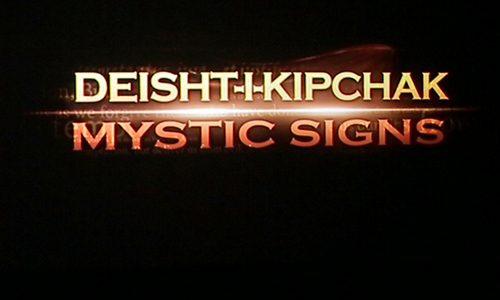New York Film Critics identified the Kazakhstani movie as a discovery of Kipchaks’ real history
The Americans are opening the unknown pages of Kazakhstan history.
The first series of the documentary "Kazakh khanate is 550 years" were presented in Robert De Niro’s New York film studio.
This unique project created on the basis of Nursultan Nazarbayev's book "In the stream of history" reflects the bright stages of the Kazakh statehood formation.
The creative expedition for shooting in Italy, Armenia and Ukraine was organized with the assistance of the Ministry of Culture and Sport of our country. The valuable manuscripts in the Kipchak language and other historical and archival documents concerning the Kazakh khanates are stored there.
Within this project, the scriptwriter and the director of the movie Bakhyt Kairbekov plans to prepare ten films. And now the American public is getting acquainted with the first series of a documentary picture "Desht-i-Kipchak: Secret signs".
Khabar’s own correspondent in the USA Maira Abdrakhmanova reports that famous New York producers and film critics identified the Kazakhstani movie as a discovery of Kipchaks’ real history.
They learned about the Kipchak language that served as a conductor of the western travelers and merchants to the Silk way borders and united the West and East culture. The national academic library of Kazakhstan took part pending the film was making. Since recent time the electronic copy of a unique writing monument "the Code Kumanikus" has been stored there.
The famous scientist-turcologist Alexander Garkavets tells about the destiny of this book in the movie. The New York audience is highly interested with the film.
Andrey Khazbulatov is a General Director of the Kazakh research institute of culture:
- We are pleased with the public’s interest to the history of Kazakhstan. In our documentary, we’d like to demonstrate the way by which modern Kazakhstan and its history influence the world culture and geopolitics. The leading experts of the Silk way, masters and scientists took part in making this movie. Shootings were implemented in Marchian's library in Italy and in archives of Ukraine. There are many manuscripts and ancient artifacts are stored there. And these facts and circumstances are reflected in the film".
Alla Verlotski is a President of "Seagull Films" studio:
- Today I’ve been very pleased to see the Italian ties on the Silk way, the Crimean and Tatar ties of Kipchaks. They are very important but little-known. The statehood is created by the letter and documentation of the nation. Therefore I am very pleased that they chose "And there was a word" as the first part. I think it is a right way to start with the word. These records, history and manuscripts can be found in archives. It seems to be the right beginning of the project.
Rafis Abazov is a Professor of Columbia University:
- I think, there are three very important moments in this film and they are remarkable for the American audience. First, we speak about the Great Silk way. The most important element is that it unites people and cultures together. The second component is very important. It reminds that globalization is not the new phenomenon and it existed the previous time. In addition, the third component is that the Kazakhstani cinematographers, culturologists, and everyone who is involved in this movie, demonstrate Kazakhstan’s contribution to the world culture.
Materials: khabar.kz









